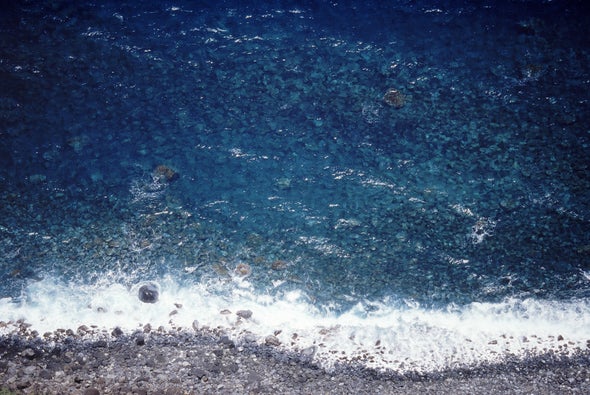(单词翻译:单击)
听力文本
This is Scientific American — 60-Second Science. I'm Christopher Intagliata.
Winter storms have walloped California this year, and snowpack is piling up. But just a few years back, the state was wrung dry by a record-breaking drought. And more dry spells will surely come.
"I think everybody agrees that we need more water resources." Adina Paytan, an oceanographer at the University of California, Santa Cruz. She points out that her home country, Israel, faced the same problem. "Israel had water issues for ever and ever. They don't have water issues anymore because they converted pretty much 90 percent of water use to desalination."
Ocean desalination hasn't enjoyed as much traction in California due to its cost, and because of concerns that the plants would damage coastal ecosystems—both when seawater is sucked in, and when leftover super-salty brines are released. Now, writing in the journal Water, Paytan and her team have assessed the environmental impact of the nation's largest plant: the Carlsbad Desalination Plant, north of San Diego.
Here's the good news. Scuba dives revealed that the communities of starfish, snails, sea cucumbers and other creatures that live on the sandy ocean bottom offshore have not budged since the plant opened in 2015. But the bad news? The plume of salty runoff stayed intact much farther out than models predicted, rather than easily blending with closer seawater.

"When you have a pool of salty water that doesn't mix, it prevents oxygen from penetrating, so it can cause lower oxygen levels close to the bottom and obviously, all the organisms that need oxygen are not going to be happy."
Ecosystems offshore from the Carlsbad plant were already disturbed by cooling water discharge from a power plant at the same site, she says, which could explain why the marine life was unfazed. But at more pristine sites, especially those rich in biodiversity like kelp forests, a salty plume might do more harm.
The state's already planning more ocean desalination projects up and down the coast. Paytan says her lesson is this: "There's tons of water in the ocean. We can use it but we just have to do it responsibly." First step: updating our models of how salty wastewater behaves offshore. To ensure that our thirst for drinking water doesn't cause an ecological sea change.
Thanks for listening for Scientific American — 60-Second Science. I'm Christopher Intagliata.
参考译文
这里是科学美国人——60秒科学。我是克里斯托弗·因塔利亚塔。
今年,冬季风暴重创加州,积雪堆积。但就在几年前,该州还曾被创记录的干旱“榨干”。而将来肯定有更多干旱期来袭。
“我想大家都同意我们需要更多水资源。”加州大学圣克鲁兹分校的海洋学家艾迪娜·佩坦说到。她指出,她的祖国以色列也曾面临同样的问题。“以色列曾长期存在水资源问题。但现在这一问题已不复存在,因为他们将90%的用水转化为淡化海水。”
由于成本问题,海水淡化在加州并没有那么受欢迎,因为人们担心海水淡化工厂会破坏海岸生态系统——无论是在吸入海水时,还是在释放废弃的超咸盐水时。现在,佩坦及其团队在《水》期刊上撰文,评估了美国最大的海水淡化工厂——圣地亚哥北部的卡尔斯巴德海水淡化工厂对环境的影响。
这里有个好消息。水肺潜水报告揭示,自该工厂在2015年投入使用以来,生活在近海沙地海床的海星、蜗牛、海参和其他生物群体并未移走。那坏消息呢?含盐径流羽流比模型所预测的要完整得多,不会轻易与较近海水相混合。
“当一池盐水混合时,它就会阻止氧气渗透,继而导致下层氧气水平接近底部,显然,所有需要氧气的生物都不会高兴。”
她说,卡尔斯巴德工厂附近海域的生态系统已经遭到了同一地区一家发电厂所排出冷却水的干扰,这可以解释海洋生物没有受到影响的原因。但在更为原始的地方,特别是海带森林等生物多样性丰富的地方,含盐羽流可能会造成更大的危害。
加州已经计划在沿海地区开展更多海水淡化项目。佩坦说她的经验是:“海洋中有大量的水。我们可以使用,但我们必须负责任地使用。”第一步:更新关于近海含盐废水活动的模型。确保我们对饮用水的渴求不会导致海洋生态变化。
谢谢大家收听科学美国人——60秒科学。我是克里斯托弗·因塔利亚塔。
译文为可可英语翻译,未经授权请勿转载!
重点讲解
重点讲解:
1. pile up (使)堆放;(使)堆积;(使)成堆;
Bulldozers piled up huge mounds of dirt.
推土机推积起大堆大堆的泥土。
2. due to 由于;因为;
Unfortunately, due to unforeseen circumstances, this year's show has been cancelled.
遗憾的是,由于一些意外情况,今年的演出被取消了。
3. prevent sb. from doing sth. 阻止;制止;阻碍;
He said this would prevent companies from creating new jobs.
他说这将使公司无法创造新的工作机会。
4. be rich in 富含…的;含有大量…的;
The rock is rich in mineral salts.
该岩石中富含矿盐。


